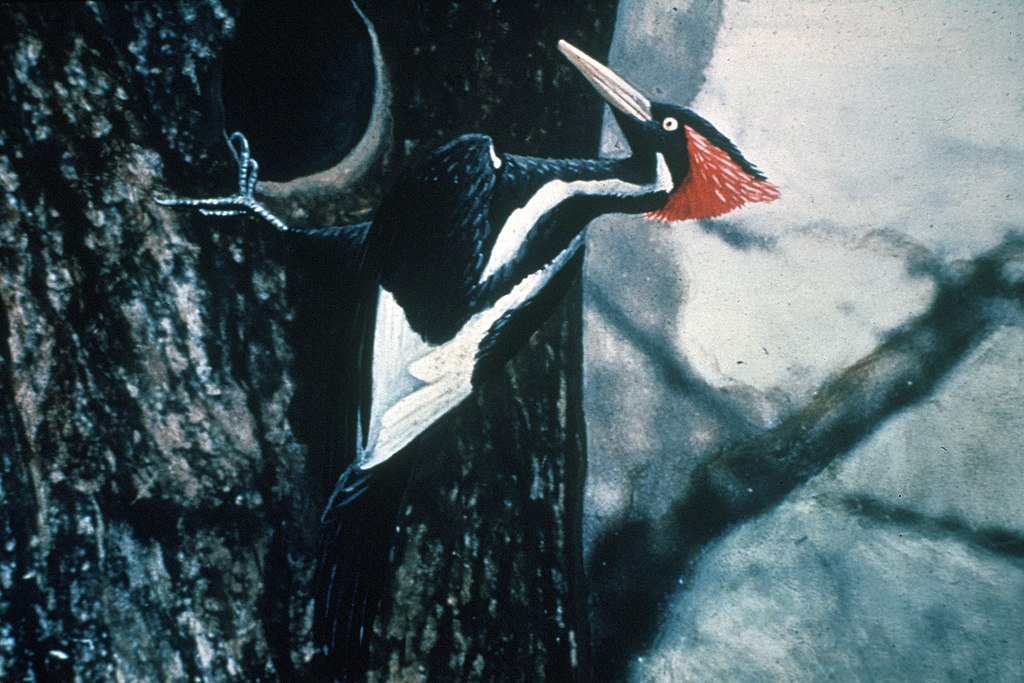US declares Ivory-billed Woodpecker extinct
Ivory-billed Woodpecker has been declared extinct by the US Fish and Wildlife Service.
Along with 22 other animals, the woodpecker was officially deemed extinct by American authorities following an announcement on Wednesday 28 September. The decision kicks off a three-month comment period before the species status changes become final.

Ivory-billed Woodpecker by Jerry A Payne (via Wikimedia).
The last universally accepted sighting of an American Ivory-billed Woodpecker occurred in Louisiana in 1944 (the last accepted sighting of a Cuban Ivory-billed Woodpecker came in 1987). Sporadic reports of sightings in the US have continued since then.
In the 21st century, reported sightings and analyses of audio and visual recordings have been published in peer-reviewed scientific journals as evidence that the species persists in Arkansas, Louisiana, and Florida. Various land purchases and habitat restoration efforts were initiated in areas where sightings and other evidence have suggested a relatively high probability the species exists, to protect any surviving individuals.
A leading figure in the hunt for the woodpecker said it was premature to call off the effort, after millions of dollars spent on searches and habitat preservation efforts. "Little is gained and much is lost" with an extinction declaration, said Cornell University bird biologist John Fitzpatrick, lead author of a 2005 study that claimed the woodpecker had been rediscovered in eastern Arkansas.
"A bird this iconic, and this representative of the major old-growth forests of the south-east, keeping it on the list of endangered species keeps attention on it, keeps states thinking about managing habitat on the off chance it still exists," he said.
The International Union for Conservation of Nature (IUCN), a Switzerland-based group that tracks extinctions globally, is yet to add the woodpecker to their list of extinct species because it's possible some birds still exist in Cuba, said the group's Craig Hilton-Taylor.

